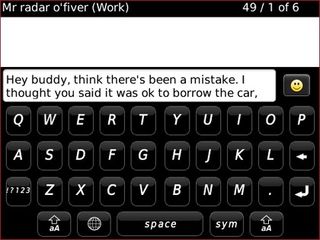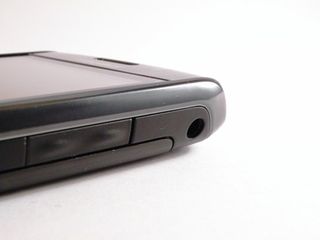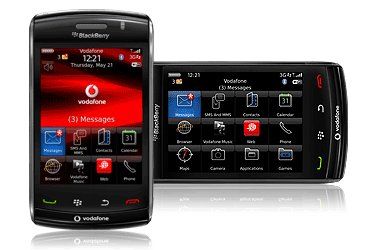Why you can trust TechRadar
The Storm 2 is sporting the new BB OS 5.0 interface, meaning the latest in functionality and gadgetry RIM has to offer.
The main thing about the Storm 2 interface is the fact that it feels like it's two phones – one as a normal touchscreen, which is a nice and responsive capacitive effort, and another the clickable display, which confirms any selection you make.
It's very disconcerting the first time you use it – it takes a long time to start trusting this method, as your natural reaction is that pushing into the screen is going to ruin accuracy.

The first thing you'll notice when turning on the Storm 2 is just how long it takes to boot up - we're talking minutes here. All well and good the first time you turn it on – a little more annoying when you find you have to do it with every subsequent boot-up whenever the battery is removed.
The interface itself is a fairly clean affair, especially if you're familiar with a BlackBerry – the home screen offers a half menu in portrait mode, with your eight favourite applications, and when moved into landscape all the menu icons become available.
Pretty much every icon on the screen can be clicked on to display further information – such as the connections tab in the top right-hand corner, which gives access to the full list of all active and inactive connections on offer, such as Wi-Fi, Bluetooth and mobile data.

As we mentioned earlier, the Storm 2's capacitive screen is excellent, and has been upgraded over the original. This means dynamic scrolling with a really fluid motion that puts it on a par with a number of other touchscreen smartphones on the market, such as the iPhone 3GS or Palm Pre.
The screen is well set for touch input, with each icon well sized for a finger. And it needs to be, as to make a choice on any element of the screen you need to click down, which as we said before can be a little disconcerting.
And try as we might, we can't see ourselves ever becoming fans of the SurePress technology. Essentially, it's hard to see the point of it – RIM clearly realised that its customers crave a QWERTY keyboard or similar, so it tried to mimic the sensation of pressing buttons.

But the difference is that touchscreens are quickly becoming mainstream and their text input understood, and we'd have to question why it's necessary to include an extra level of input into the whole affair.
We're not saying the SurePress doesn't work, but it does get a bit tiresome to use over and over again. Also, sometimes the OS can slow down slightly, and when this happens all the buttons will lock, meaning you can't do anything until the system has fixed the momentary issue.
The difference between the BlackBerry OS and other systems is that each screen is fairly minimal, with further information options activated by hitting the menu button.
This is a nice touch, as elements like messaging or contacts aren't cluttered up with extra icons to expand the selection.

Overall, we're impressed with the BB OS 5.0 interface, and especially the way it's been implemented on the Storm 2. Very rarely could we find a time when the phone would slow down or lag in a noticeable way, and most things popped up the second we asked them too, which is a real bonus in a smartphone.
It could all do with being a bit less convoluted, but mobile phone ecosystems are built on evolution rather than revolution – RIM wouldn't want to completely re-invent the BB OS just to make it seem more 'iPhone-like'.
Current page: BlackBerry Storm 2 9520: Interface
Prev Page BlackBerry Storm 2 9520: Overview, design and feel Next Page BlackBerry Storm 2 9520: Calling and contacts
Gareth has been part of the consumer technology world in a career spanning three decades. He started life as a staff writer on the fledgling TechRadar, and has grown with the site (primarily as phones, tablets and wearables editor) until becoming Global Editor in Chief in 2018. Gareth has written over 4,000 articles for TechRadar, has contributed expert insight to a number of other publications, chaired panels on zeitgeist technologies, presented at the Gadget Show Live as well as representing the brand on TV and radio for multiple channels including Sky, BBC, ITV and Al-Jazeera. Passionate about fitness, he can bore anyone rigid about stress management, sleep tracking, heart rate variance as well as bemoaning something about the latest iPhone, Galaxy or OLED TV.

